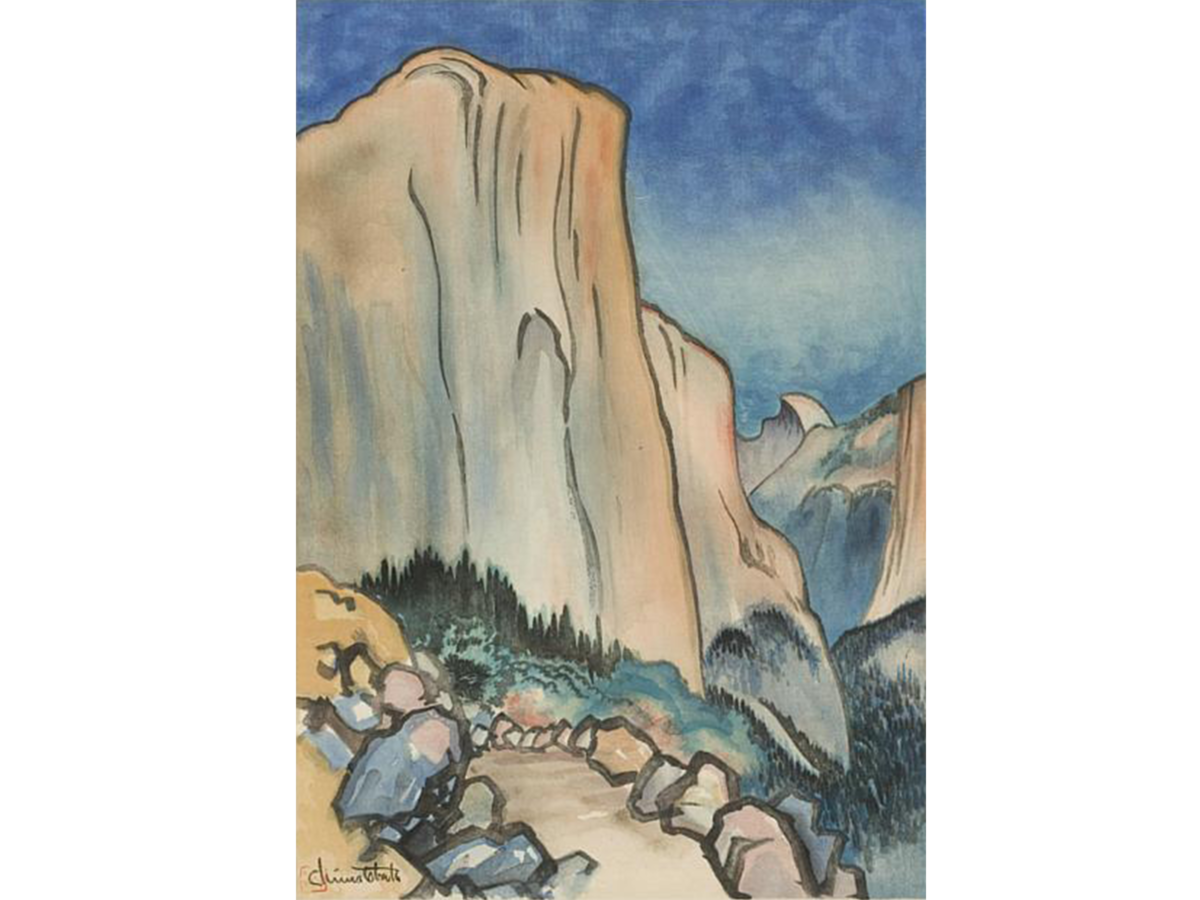Activity
Obata-Inspired Poetry
Objective: Students will practice close looking and writing skills through crafting poems inspired by Chiura Obata’s natural landscapes.

View Works by Chiura Obata
California Content Standards
RL.1.4 Identify words and phrases in stories or poems that suggest feelings or appeal to the senses.
SL.2.5 Add drawings or other visual displays to stories or recounts of experiences when appropriate to clarify ideas, thoughts, and feelings.
SL.3.5 Create engaging audio recordings of stories or poems that demonstrate fluid reading at an understandable pace; add visual displays when appropriate to emphasize or enhance certain facts or details.
RL.3.10 By the end of the year, read and comprehend literature, including stories, dramas, and poetry, at the high end of the grades 2–3 text complexity band independently and proficiently.
W.6-7.3.d Use precise words and phrases, relevant descriptive details, and sensory language to convey experiences and events.
RL.7.10 By the end of the year, read and comprehend literature, including stories, dramas, and poems, in the grades 6–8 text complexity band proficiently, with scaffolding as needed at the high end of the range.
Materials
Obata Nature Artworks image gallery (download PDF from sidebar above)
Paper
Pencils
Colored pencils
Sharpie pens
Paint (to decorate)
“Obata’s Yosemite : Art and Letters of Obata from His Trip to the High Sierra in 1927” (optional, paperback widely available for purchase)
Download the teacher packet from the sidebar above for complete instructions.
Procedure
- Introduce Chiura Obata. Consider how nature-inspired artwork has influenced society through a classroom discussion.
- Lead a discussion on how and why it is important to celebrate nature. Ask questions such as:
- How is nature important?
- How can we preserve nature?
- Why is it important for people to celebrate nature?
- Show students the following poem by Obata along with an artwork; invite a classroom reader to read aloud the text.
My aim is to create a bowl full of joy
Clear as the sky,
Pure as falling cherry petals,
Without worry, without doubt;
Then comes full energy, endless power
And the road to art.
- Ask students to consider what these words mean. Ask students how the placement of words on the page changes how we view the poem.
- Inform students of the following assignment: Students will compose rough drafts of poems inspired by landscape art. Poems should be 6 to 12 lines long, using both a metaphor and simile. Define metaphor and simile for your students, if you have not covered this material previously.
- Metaphor — A figure of speech that is used to make a comparison between two things that aren’t alike but do have something in common https://examples.yourdictionary.com/metaphor-examples-for-kids.html
- Simile — a figure of speech that directly compares two different things. The simile is usually in a phrase that begins with the words “as” or “like.” This is different from a metaphor, which is also a comparison but a metaphor says something is something else. https://examples.yourdictionary.com/simile-examples-for-kids.html
- Distribute art prints or project the Obata Nature Artworks PDF for students to view, allowing brainstorming time for students to consider the subject of their poems.
- Allow time to write poems on art paper, trace poems with a Sharpie, and decorate to display.
Extensions
- Extend or modify the assignment for the following themes: saving nature, visiting a national park, or simply an experience that students have had outside.
- Consider incorporating the effects of climate change in your discussion and poem prompt.





